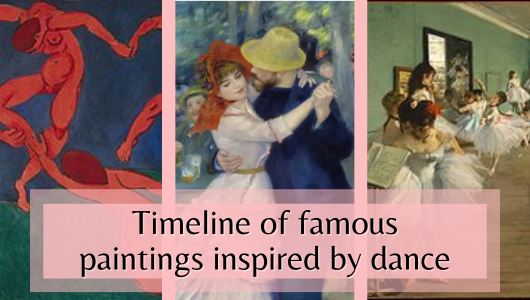ART! Art is beautiful and it takes passion to create a true masterpiece. Whether it’s an oil painting on canvas or performance art on stage, they both take an incredible amount of talent and hard work to execute well. Below is a historical timeline with some of the best art pieces inspired by dance.

1856, La Danse by William-Adolphe Bouguereau. This work was commissioned to decorate the living room of Anatole Bartholoni in his Paris hotel. It celebrates the beauty of movement and the joy of being alive, reminding us of the power of art to inspire and uplift the human spirit.
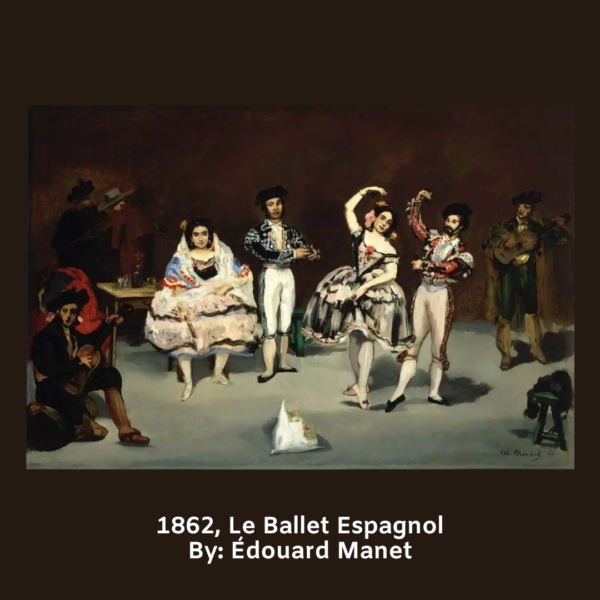
1862, Le Ballet Espagnol by Edouard Manet. Featured in this painting are Lola de Valence (seated), and Mariano Camprubi (standing). Camprubi was a principal dancer with Madrid Dance Troupe. Manet’s work is said to capture the spirit and energy of the Spanish ballet, with its lively music and vibrant costumes. Overall, Le Ballet Espagnol is a celebration of art, culture, and the joy of movement.
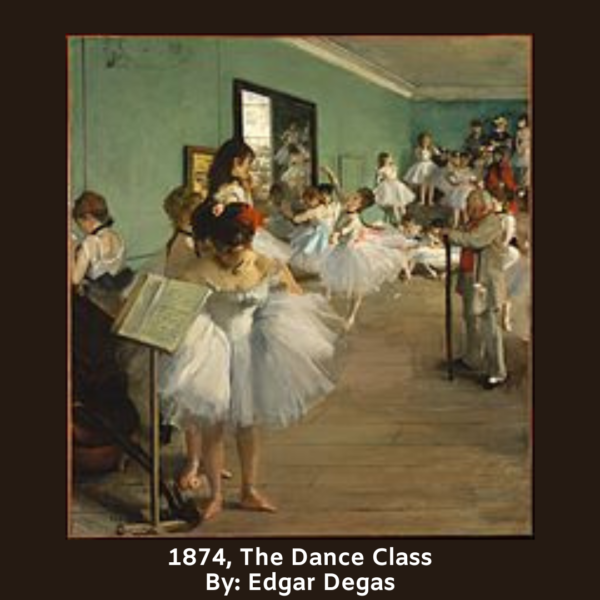
1874, The Dance Class by Edgar Degas. What a fun glimpse into dance life during the 1800’s. Although this was an imaginary scene depicting dance class with Jules Perrot, a famous ballet master, in the old Paris Opera, it gives us insight to dance in that era. Also, fun fact, in 2020 Misty Copeland re-created scenes from Degas’ works with Harper Bazaar. This is one of the paintings she re-created.

1874, The Rehearsal of the Ballet on Stage by Edgar Degas. Ballet was a huge part of Parisian life during the 1800’s, but unlike other painters, Degas highlighted the work behind the performance. In this painting he portrays the dancers in cohesive uniforms, but their faces all exhibit different individual expressions. They all look exhausted, and we can see the hard work it takes to pull off a ballet performance. What dancer can’t relate to this?
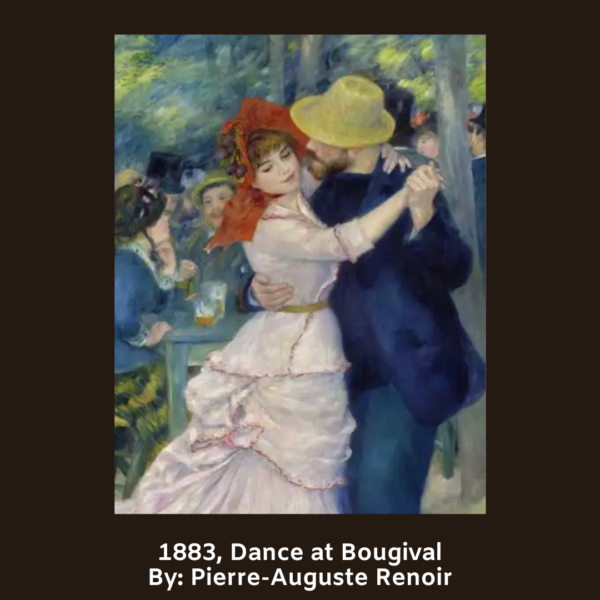
1883, Dance at Bougival by Pierre-Auguste Renoir. This piece of art features unknown dancers, but it is famous for its sense of movement and spontaneity. As you can see, the two dancers are surrounded by a lively scene of cafe goers in Bougival (just outside of Paris). If you live in New England, this beautiful artwork can be seen in the Museum of Fine Arts in Boston, MA.

1888, Breton Girls Dancing, Pont-Aven by Paul Gauguin. The artist, Gauguin, wrote to art dealer, Theo VanGogh (Vincent VanGogh’s brother), “I am doing a gavotte bretonne: three little girls dancing in a hayfield. . . the painting seems original to me, and I am quite pleased with the composition.” Although the subjects of this artwork are dancing, the focus is on the colors, zig-zagging lines of their arms, and juxtaposition between the size of the dancers and hay piles. Like any talented choreographer, Gaugin is focusing on the structure and details of his art.

1889-1890, La Chahut by Georges Seurat. Chahut means noise or uproar, which is a perfect description of the Can-Can, made popular in France in the 1830’s. The Can-Can was a scandalous dance that transitioned from individuals in a ballroom to chorus line performances onstage around the 1890’s. Fun fact, you can still catch a live performance of this famous dance in Paris at the Moulin Rouge.
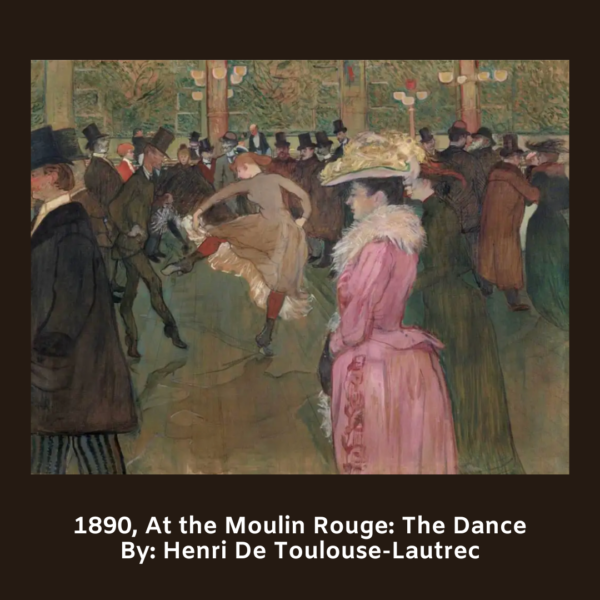
1890, At the Moulin Rouge: The Dance by Henri De Toulouse-Lautrec. The painting captures the energy and excitement of the dancers, musicians, and patrons as they engage in a lively dance. The contrasting colors highlight the difference between the glamour of the performers and the seediness of the surroundings. Through this painting, Toulouse-Lautrec offers a glimpse into the chaotic world of the Moulin Rouge, while also commenting on the social and cultural changes taking place in Paris during this time period.
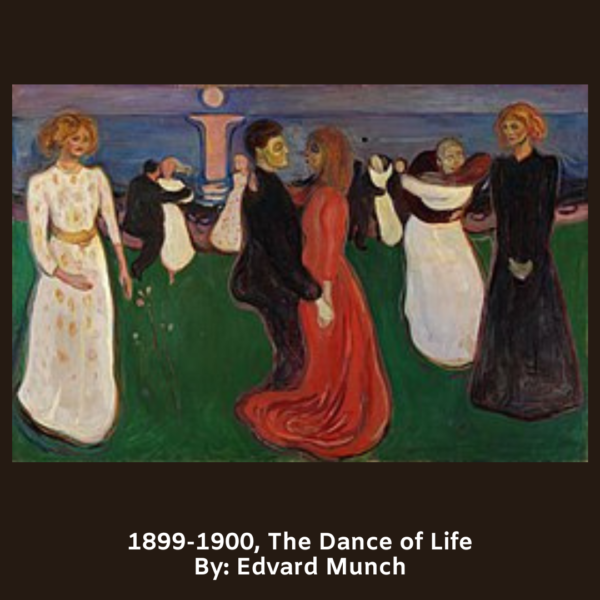
1899-1900 The Dance of Life by Edvard Munch. This painting explores the different stages of life, as well as the cycles of love and loss. It features three figures, a man and two women, who are engaged in a dance that symbolizes the passage of time. The figure on the left is young and carefree, while the figure on the right is older and more contemplative. The central figure, a woman, represents the fleeting nature of life and love. This painting is often interpreted as a meditation on the transience of human existence and the importance of living in the present moment. Through its powerful imagery and emotional resonance, The Dance of Life speaks to the universal human experience of love, loss, and the passage of time.

1906 The Dance by Andre Derain. This painting is often associated with the Fauvist movement, which emphasized the use of bold colors and simplified forms. The Dance is thought to represent the joy and energy of life, with the figures in the painting moving in unison and celebrating together. Overall, the painting is a vibrant and joyful expression of the human spirit.
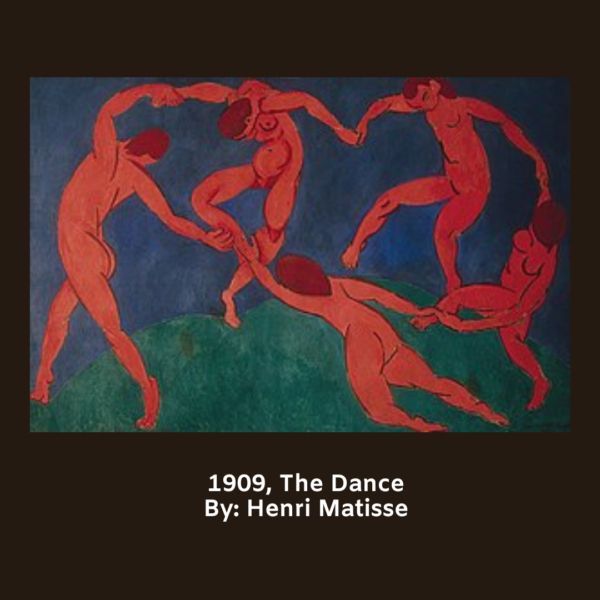
1909 The Dance by Henri Matisse. These energetic and rhythmic dancers are caught up in the moment and the music. The painting is often interpreted as a symbol of human desire for harmony and unity, and the power of art to bring people together. Matisse’s use of color and form in The Dance is masterful, creating a dynamic and uplifting work of art that continues to inspire and delight viewers today.
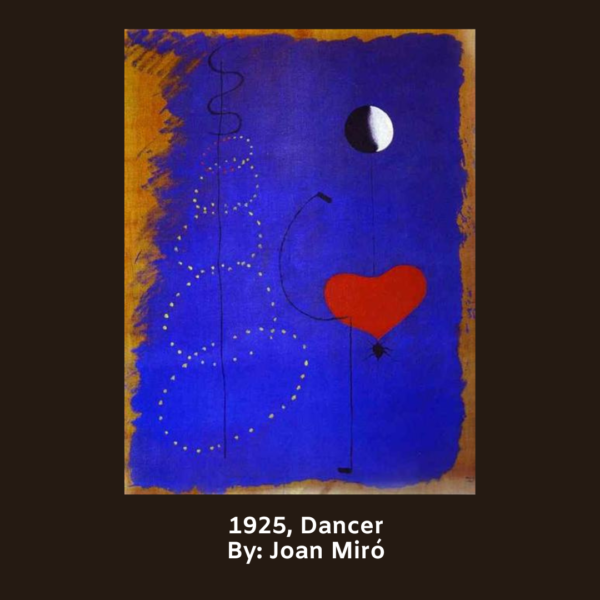
1925, Dancer by Joan Miro. “Dancer” is considered to be one of Miro’s most iconic pieces and is currently housed in the Museum of Modern Art in New York City. The painting portrays a figure in motion, capturing the essence of dance.
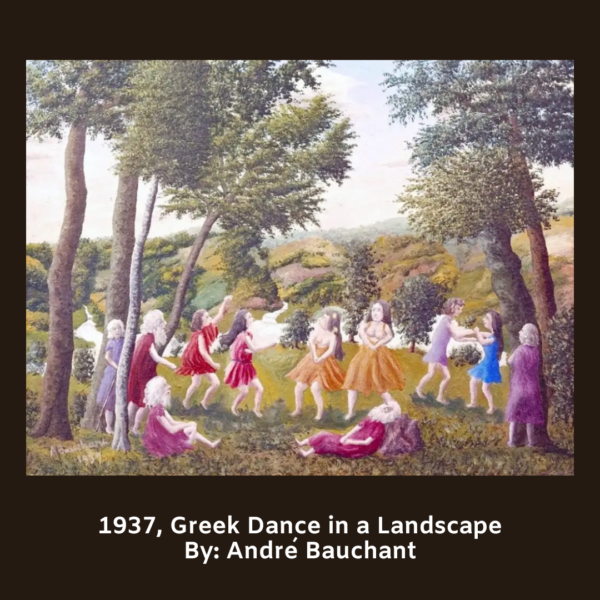
1937, Greek Dance in a Landscape by Andre Bauchant. The painting reflects Bauchant’s interest in Greek mythology and his appreciation for the natural world. The women’s flowing dresses and carefree expressions suggest a celebration of life and a connection to nature. Overall, the painting captures a moment of beauty and vitality.

1938, The Apache Dance by Max Beckmann. This painting is a representation of the dance (Apache Dance) that was popular in Paris in the early 1900s. However, the painting is not simply a depiction of the dance, but rather a commentary on society and the human condition. Beckmann uses bold lines, contrasting colors, and distorted figures to convey the violence and chaos that underlies the seemingly carefree dance. The painting can be interpreted as a critique of the decadence and moral decay of European society at the time, or as a reflection on the darker aspects of human nature.
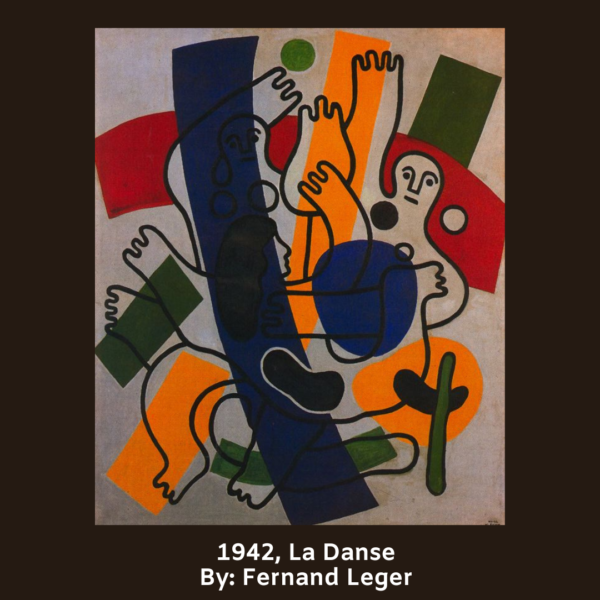
1942, La Danse by Fernand Leger. La Danse is a masterpiece that captures the essence of modernism in art. The painting depicts a group of figures engaged in a lively dance. Leger’s use of abstraction and fragmentation in the figures and the background suggests a sense of movement and dynamism. Furthermore, the painting’s subject matter and style reflect the artist’s interest in the urban environment and the machine age, as well as his celebration of human vitality and joy. Overall, La Danse is a testament to the transformative power of art and its ability to capture the spirit of a particular time and place.
Dance has always been an inspiration to me and I find it interesting to see so many great painters feel moved by it too. Afterall, life is art and art is life.
Nichole Fortunato, Director & Co-Owner
Elite Performance Challenge
Excel in Motion

